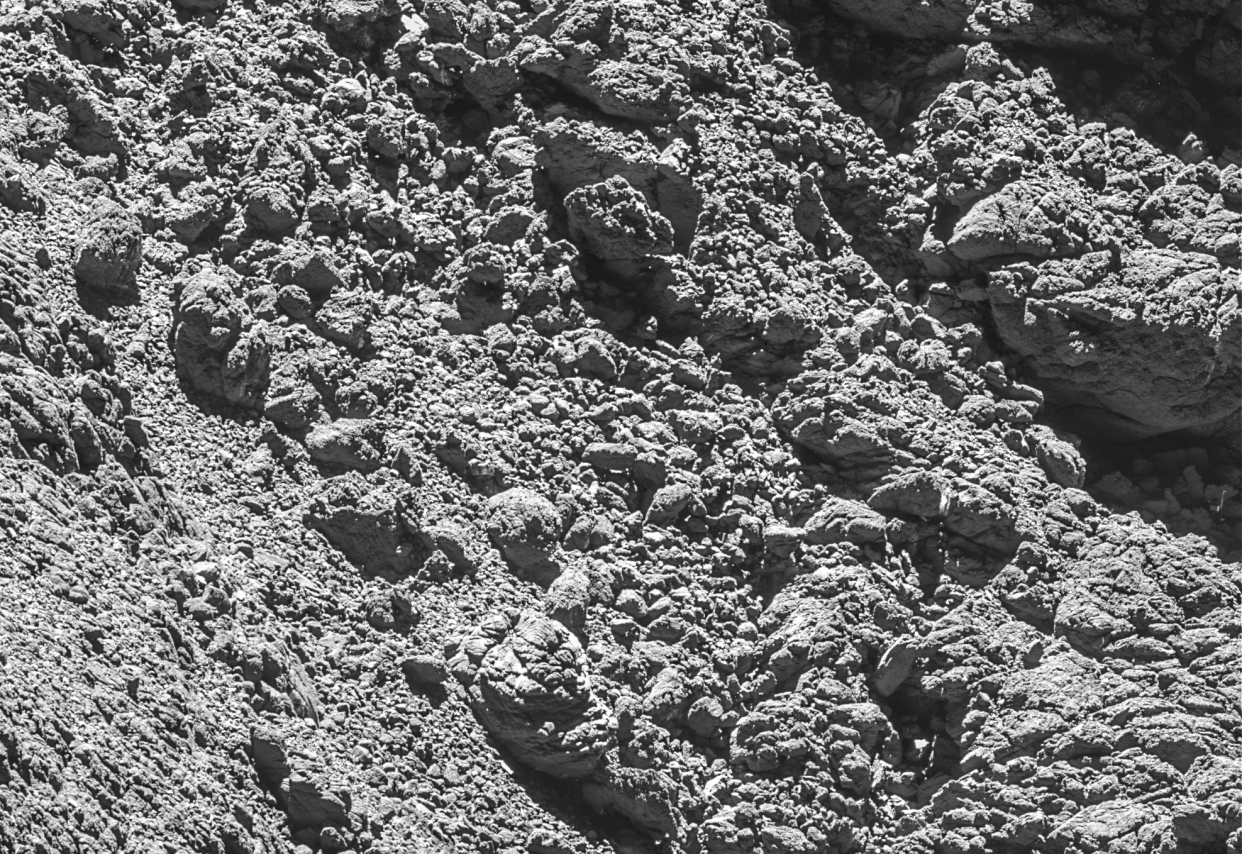Final moments of Philae lander pieced together by scientists who reveal ‘fluffy’ nature of comet it landed on

The European Space Agency has pieced together the final movements of its doomed Philae lander, which crashed to its death in 2014.
The spacecraft was supposed to descend to Comet 67P/Churyumov-Gerasimenko and land on its surface, with the aim of doing research on the object when it did.
But that touchdown went wrong, sending the spacecraft bouncing into space until it fell to its final resting place. Its last location was not identified for 22 months, when Philae was spotted in images from the Rosetta orbiter that stayed floating around the comet.
Still, one mystery remained about those dramatic last moments of Philae. As it dropped to the comet, it hit its initial touchdown surface and then bounced up a mile into the air, taking a two-hour flight, colliding with a cliff edge and tumbling towards a second location.
It would go on to tumble to “Abydos”, finding the sheltered spot that was spotted in those images and remains its lasting home today. But the location of that second touchdown location, where it crashed before falling there, has remained a mystery.
Now researchers have published work in the journal Nature that finds the location of that crash: “skull-top ridge”. The location was given its name because of its similarity to a human head, and was discovered by pulling together data from the Rosetta and Philae instruments to assemble the lander’s movements.
Laurence O’Rourke, from the European Space Agency, said that the discovery helped give an answer to the one lasting question about the lander.
“Philae had left us with one final mystery waiting to be solved,” he said. “It was important to find the touchdown site because sensors on Philae indicated that it had dug into the surface, most likely exposing the primitive ice hidden underneath, which would give us invaluable access to billions-of-years-old ice.”
The research also reveals more about the ice on the interior of the comet that Philae attempted to land on. When it smashed into the surface, it allowed researchers to measure the icy dust that it kicked up – and they found that it was far softer than they realised, which may have been at least partly to blame for Philae’s failed landing.
“The simple action of Philae stamping into the side of the crevice allowed us to work out that this ancient, billions-of-years-old, icy-dust mixture is extraordinarily soft – fluffier than froth on a cappuccino, or the foam found in a bubble bath or on top of waves at the seashore,” said O’Rourke.
Researchers may now be able to use those findings to improve the design of future landers and try and ensure they don’t meet the same fate.
“This is a fantastic multi-instrument result that not only fills in the gaps in the story of Philae’s bouncy journey, but also informs us about the nature of the comet,” says Matt Taylor, ESA’s Rosetta project scientist.
“In particular, understanding the strength of a comet is critical for future lander missions. That the comet has such a fluffy interior is really valuable information in terms of how to design the landing mechanisms, and also for the mechanical processes that might be needed to retrieve samples.”
Read more
Philae lander found on comet almost two years after going missing


